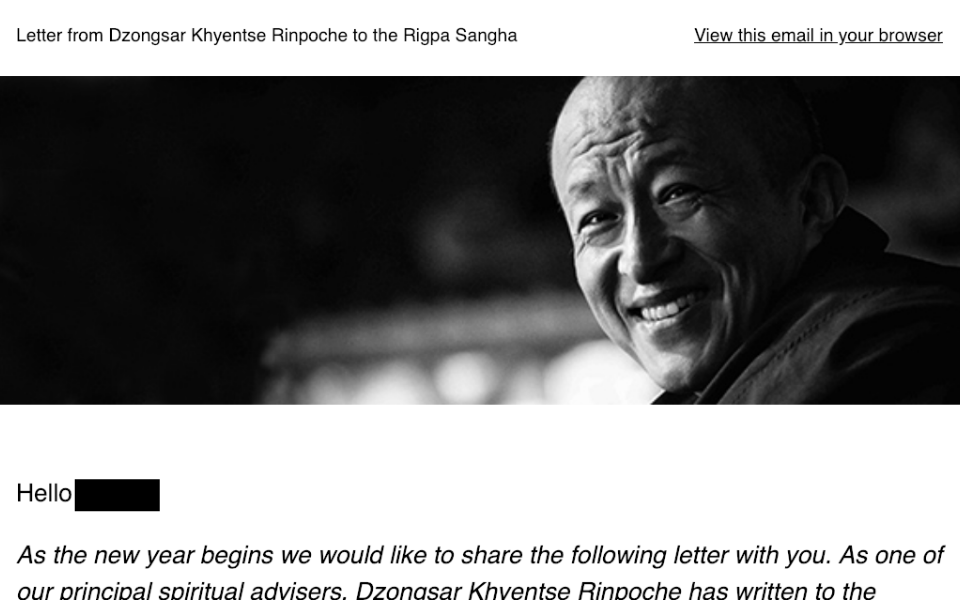Just over a year ago, eight long-term students of Sogyal Lakar (known as Sogyal Rinpoche) sent him a letter that is still shaking the foundations of […]
On January 3rd, Rigpa International members received a letter from Dzongsar Jamyang Khyentse, dated December 25th. It was emailed by Rigpa’s “Vision Board”. The Vision Board is […]
Stories of abuse and betrayal tremble beneath the veneer of spiritual groups. Silently. For decades. The veneer functions like money does in the Epstein world to […]
A source forwarded the following email, sent by a Shambhala leader to volunteers and residents at Vermont’s Karmê Chöling, the Buddhist retreat centre founded by the […]

